Can You Wire Tweeters to Door Speakers? (Deep Dive)
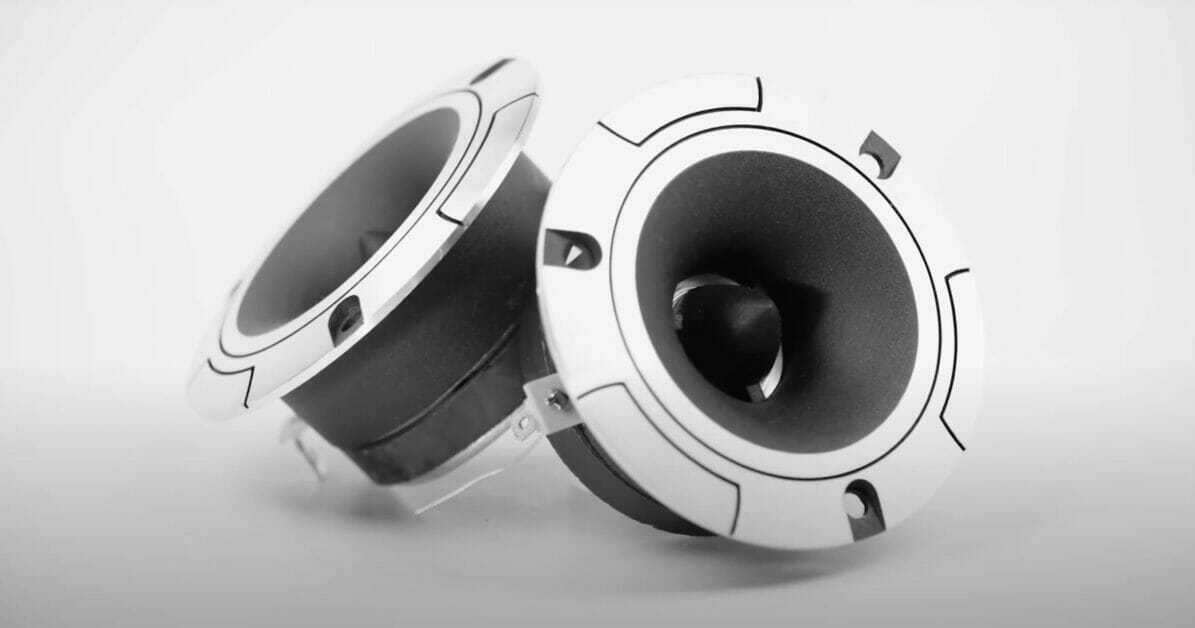
So you’re tinkering with your car’s audio system, and now you’re wondering, can I wire my tweeters to the door speakers?
Well, I’ve got good news for you – yes, you absolutely can! It’s a bit of a DIY project, but hey, that’s half the fun.
Today, we’ll dive into this how-to process, from understanding speaker wiring basics to getting dirty with the installation. Don’t worry if it sounds complicated; I’m here to guide you every step of the way!
Getting Started
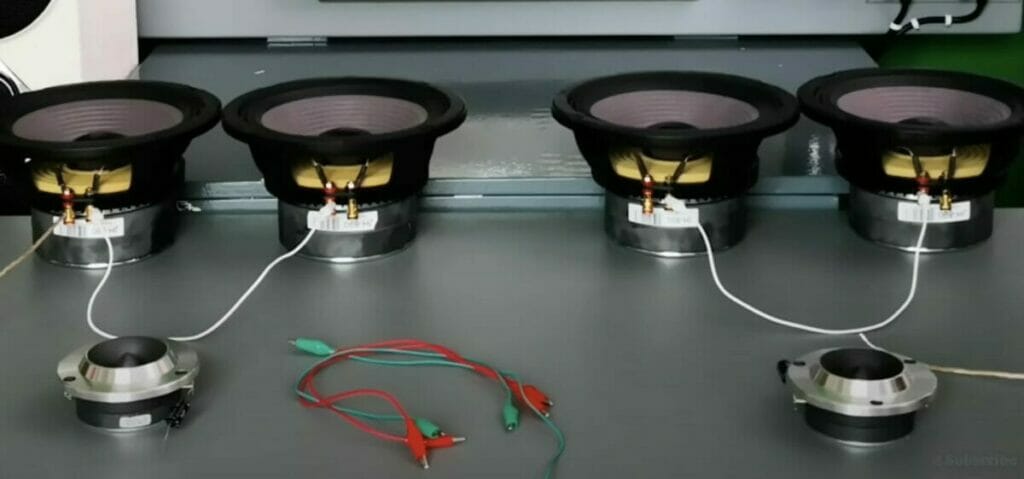
The magic begins with your car’s stereo system. It sends an electrical audio signal to the speakers. That’s where the conversion from electricity to music happens.
Now, let’s talk about speaker wires, those unsung heroes that carry these signals. They’re typically color-coded and consist of a positive (+) and negative (-) wire.
When connecting your tweeters to your door speakers, some folks might think it’s as simple as twisting a couple of wires together – but hold up! There’s more you need to know!
There are two common ways you can wire speakers:
- Series: This means chaining them together in a single line from a positive terminal to a negative one.
- Parallel: Here, you connect all positives and all negatives.
Sounds simple enough? Not so fast! You have to consider something called impedance (measured in ohms). If not kept in check, this could damage your car audio system – yikes!
Here’s how series and parallel connections affect impedance:
| Connection Type | Impedance Effect |
|---|---|
| Series | Increases total impedance |
| Parallel | Decreases total impedance |
Things get interesting here… tweeters are different from regular door speakers. They’re designed for high-frequency sounds (like cymbals crashing), while regular door speakers handle lower frequencies (think bass guitar).
So, what happens when we connect these two types? Can they play nicely together?
How Tweeters Work
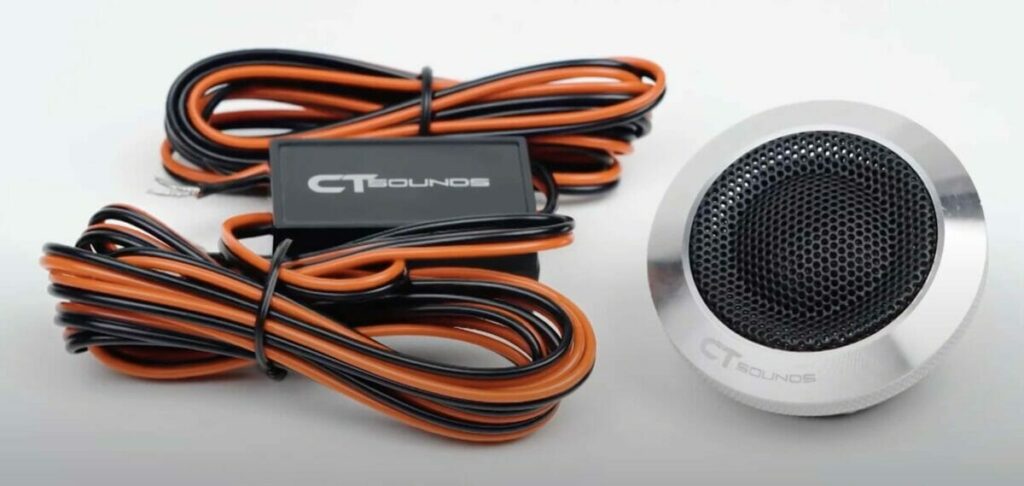
Tweeters are speakers designed specifically to produce high-frequency sounds.
The frequency range for human hearing is roughly 20Hz to 20kHz. This whole spectrum isn’t handled by one speaker alone; it’s typically divided among different types of speakers. That’s where tweeters come into play! These guys specialize in handling frequencies from about 2kHz to 20kHz—the upper end of our hearing spectrum.
But here’s something even more interesting: Not all tweeters are created equal. There are several types depending on their design and material used:
Dome Tweeters
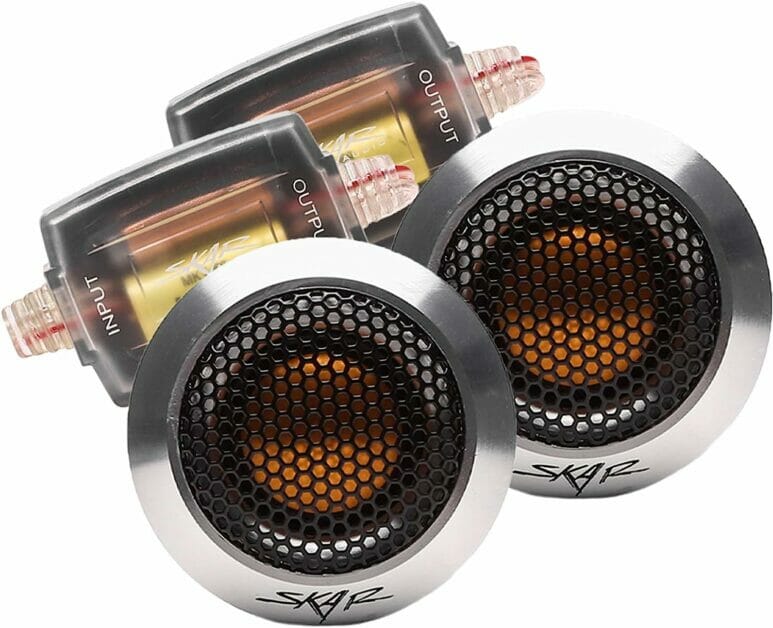
These are super common and give off great sound dispersal.
Cone Tweeters
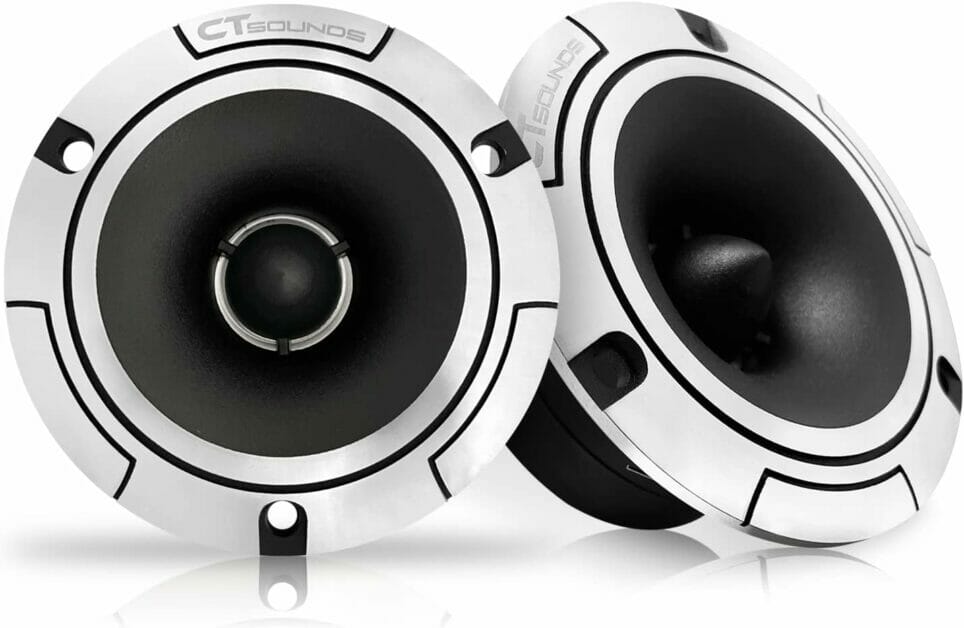
These are usually found in older cars but perform well at higher frequencies.
Ribbon and Planar Magnetic Tweeters

A bit more sophisticated – they provide an excellent response but can be pricier.
So why should you care about wiring them to door speakers? Incorporating tweeters with your door speakers can vastly improve your audio experience! It helps balance out the sound by ensuring those higher frequencies don’t get lost amidst booming bass or powerful midrange sounds from other speakers.
Music isn’t just about volume but also clarity and detail!
How Door Speakers Differ From Tweeters
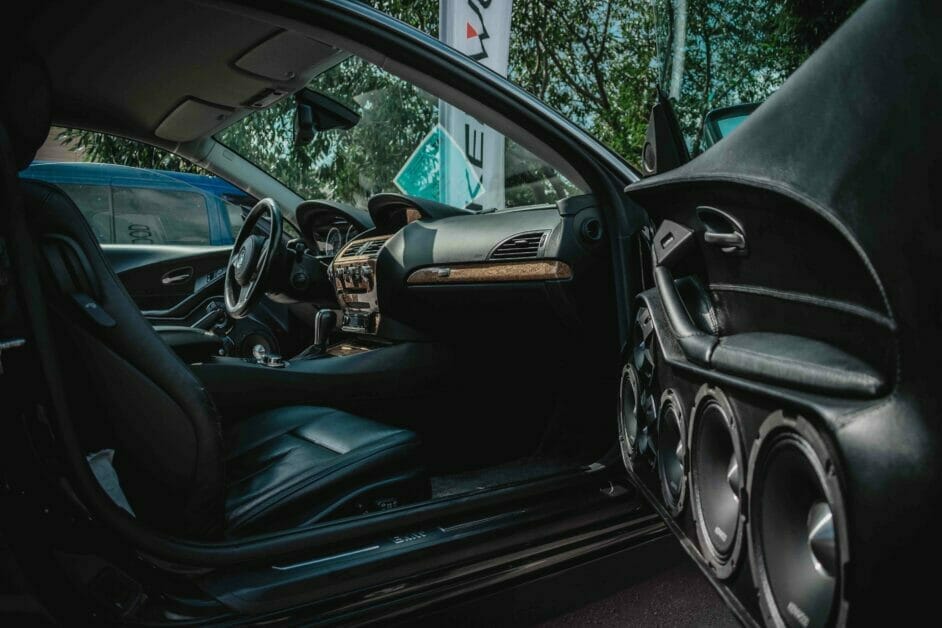
Door speakers, also known as woofers or mid-range speakers, are the workhorses of your car’s audio system. They handle the bulk of sound frequencies ranging from 500 to 2,000 Hz. These guys pack a punch when delivering powerful bass and midrange sounds.
On the flip side, we have tweeters. These small but mighty components take care of the higher-frequency sounds. They usually operate above 2,000 Hz and can reach a staggering 20,000 Hz!
Here’s a little table that breaks down this info:
| Door Speakers | Tweeters | |
|---|---|---|
| Frequency Range (Hz) | 500-2000 | >2000 |
| Sound Type | Bass/Midrange | High Frequency |
It’s not just about frequency range, though. Size matters, too! Typically, door speakers are larger because they need more space to generate those low-frequency sounds effectively. Meanwhile, tweeters are much smaller and generally mounted at ear level for optimal high-frequency sound projection.
Lets Recap:
- Door Speakers – Deliver strong bass and lower midrange tones.
- Tweeters – Produce clear and crisp high-frequency notes.
Why You’d Want to Wire Tweeters to Door Speakers
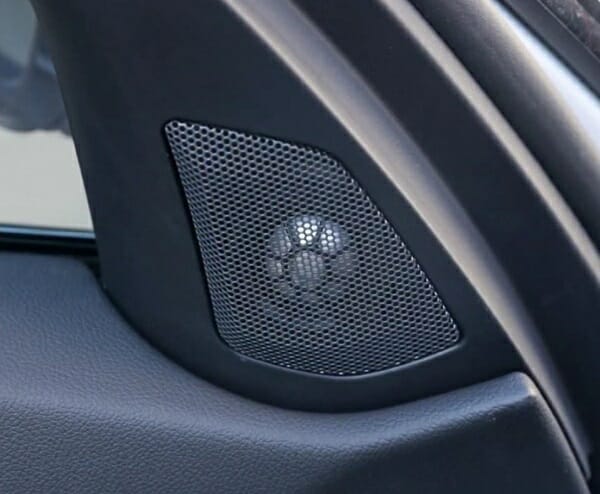
Sound Quality
Firstly, sound quality is a biggie. When you wire tweeters to your door speakers, you’re giving yourself the gift of high-frequency audio. That means all those cymbal crashes and high notes in your favorite songs will come through crystal clear. It’s like being at a live concert right in your car!
Sound Dispersion
Secondly, let’s talk about sound dispersion. Ever notice how music can sound different depending on where you’re sitting? Lower-frequency sounds are omnidirectional (they go everywhere), while higher frequencies are more directional and easier to pinpoint.
Wiring your tweeters into your door speakers gives you a broader sound spread throughout the car.
Gear Protection
Here’s another reason – protecting your gear from damage. Your standard speaker isn’t meant to handle high frequencies that well – that’s what the tweeter is for! Wiring them together ensures each part only deals with the frequencies they’re designed for – kind of like delegating tasks at work!
Volume Balance
And lastly, my friends, let me mention the improved volume balance between low- and high-frequency sounds. No one likes it when bass drowns out everything else or vice versa.
So, if you’re all about that perfect blend of sound in your ride, wiring those little tweeters could be just the ticket!
Step-by-Step Guide on Wiring Tweeters to Door Speakers
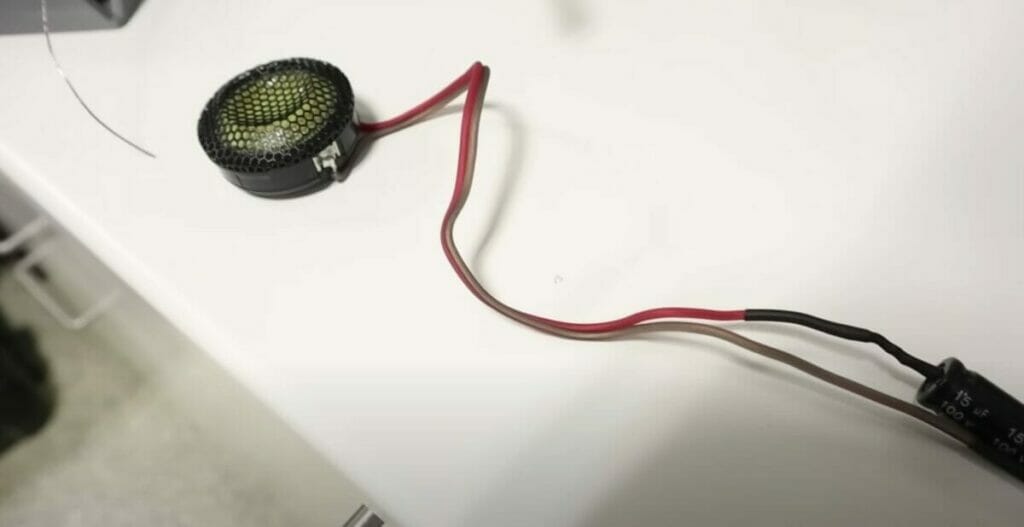
Now, onto the meaty stuff. Let’s get into the nitty-gritty of wiring tweeters to door speakers. It’s not as complicated as you might think!
Step 1. Materials Checklist: Prepare standard wire stripper, screwdrivers, and patience.
Step 2. Locate Speaker Wires: Remove the door panel to find hidden wires.
Step 3. Determine Polarity: Identify negative (-) and positive (+) wires; usually, lines denote negatives.
Step 4. Strip New Tweeter Wires: Use wire strippers to strip half an inch from both tweeter wire ends.
Step 5. Connect Wires: Attach new tweeter wires to existing speaker terminals, matching polarity.
Step 6. Double-Check Connections: Ensure positive-to-positive and negative-to-negative connections.
Step 7. Reassemble Panels: Put back any removed panels during the process.
Common Mistakes When Wiring Tweeters to Door Speakers
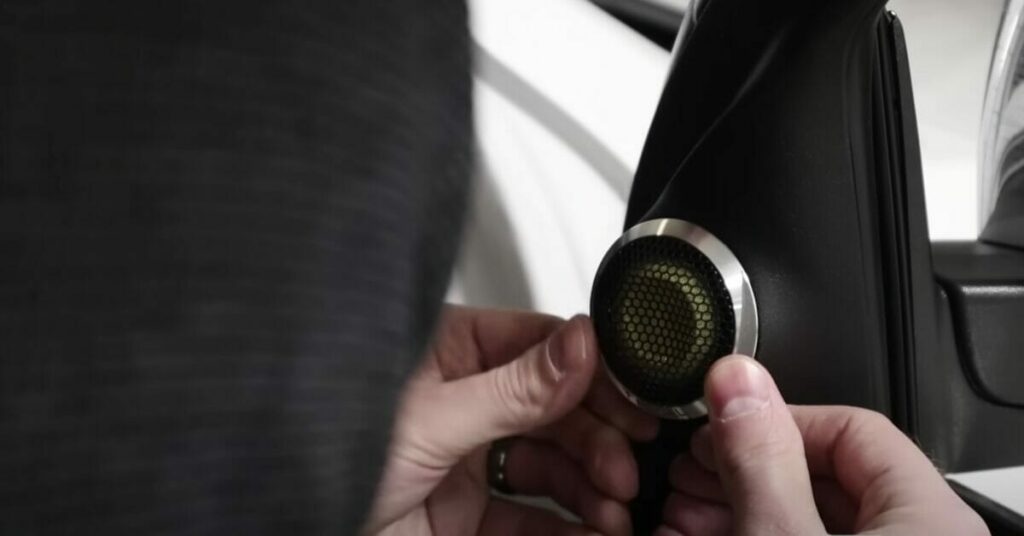
I’ve seen it all, folks! The audio world is bursting with DIY enthusiasts, but sometimes we make mistakes. I’m here to highlight the common missteps when wiring tweeters to door speakers.
One of the biggest blunders is connecting tweeters directly to the same channels as your main speakers without using a crossover. This is like trying to use a wrench when you need a screwdriver—it’s just not going to work! The high-frequency signals for your tweeter can go straight into your full-range speaker and cause damage over time.
Another regular error? Not paying attention to polarity. It’s easy to overlook but crucial for maintaining sound quality.
If you wire incorrectly, they could be out of phase, resulting in poor audio performance or damaging your speakers.
- Correct: The speaker’s positive terminal connects to the tweeter’s positive terminal.
- Incorrect: The speaker’s positive terminal connects to the tweeter’s negative terminal.
Also, let’s not forget about placing our precious tweeters too far from our main speakers. You’re probably thinking, “What difference does it make?” Well, my friend, it makes a big difference! Your ears (and neighbors) will thank you if you keep them close together for that optimal sound blend!
Finally, don’t underestimate the importance of using suitable wires for connection. We often commit this sin because, hey, wire’s wire, right? Wrong! Using thin or low-quality wires can lead to signal loss and degrade sound quality over time—not what we want!
To sum up:
- Don’t connect tweeters directly sans crossover.
- Pay heed to polarity.
- Keep them close: Place your Tweeter near the main speaker.
- Use appropriate cables for connections.
Don’t worry if you’ve made these mistakes before—I’m sure most of us have at some point!
Maintaining Your Wired Audio System: Best Practices and Tips
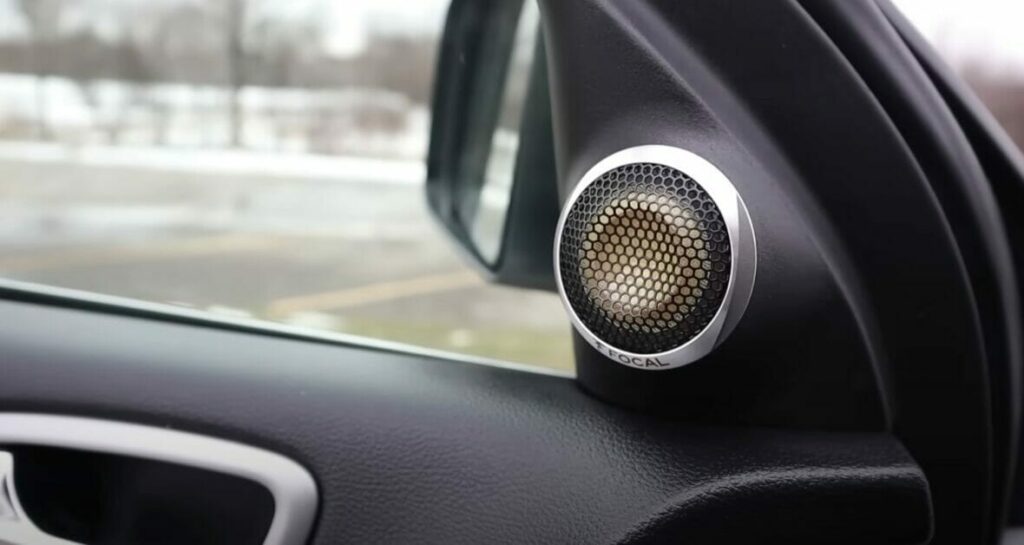
Trust me when I say a little maintenance can go a long way.
First things first, let’s talk about cleaning. Dust and grime can muck up the work over time. So, now and then, give your speakers a gentle wipe-down with a dry cloth. Don’t forget those hard-to-reach corners!
Next on my list is getting the sound balance just right. Readjust your speaker settings for optimal sound quality occasionally (especially after making any changes).
And lastly, but super importantly – avoid cranking up the volume too high for prolonged periods. Sure, we all love blasting our favorite tunes, but doing so could potentially damage your tweeters or door speakers over time.
Quick Recap:
- Keep them clean
- Be mindful of temperature extremes
- Balance your sound settings
- Don’t blast the volume consistently
Remember folks – treat them right, and they’ll sing sweet sounds back at you! Happy driving…and even happier listening!
References
Studies and Research:
- Acoustic Society of America. https://acousticalsociety.org/
Books:
- The Complete Guide to Car Audio: A Practical, No-Nonsense Guide to Upgrading Your Car Audio System by Kevin O’Connor
Website Resources:
- Crutch Field. https://www.crutchfield.com/S-XdcWP73un3B/
- Car Audio Now. https://www.caraudionow.com/
- The 12 Volt. https://www.the12volt.com/
- Skar Audio. https://www.amazon.com/Skar-Audio-SPX-T-Neodymium-Aluminum/dp/B01DID1TG4/
- CT Sounds. https://www.amazon.com/CT-Sounds-Pro-Audio-Tweeter/dp/B00HTDQ73K/
- Dayton Audio. https://www.amazon.com/Dayton-Audio-PTMini-6-Planar-Tweeter/dp/B01MZIG8KJ/
Video References:
Az Superbox
ALEkS ON
CarAudioFabrication
Kaiweets Tools
Silver Cymbal
The Home Depot
